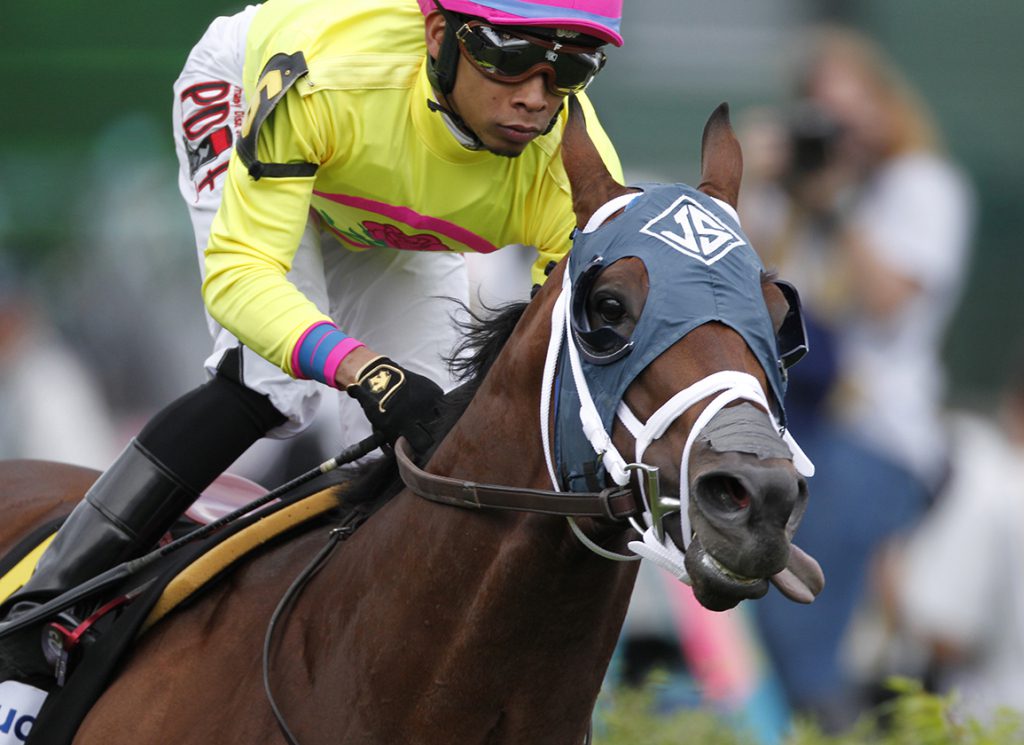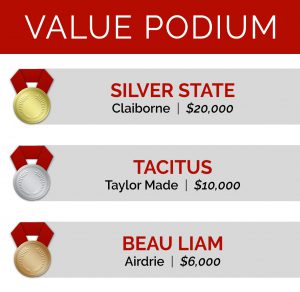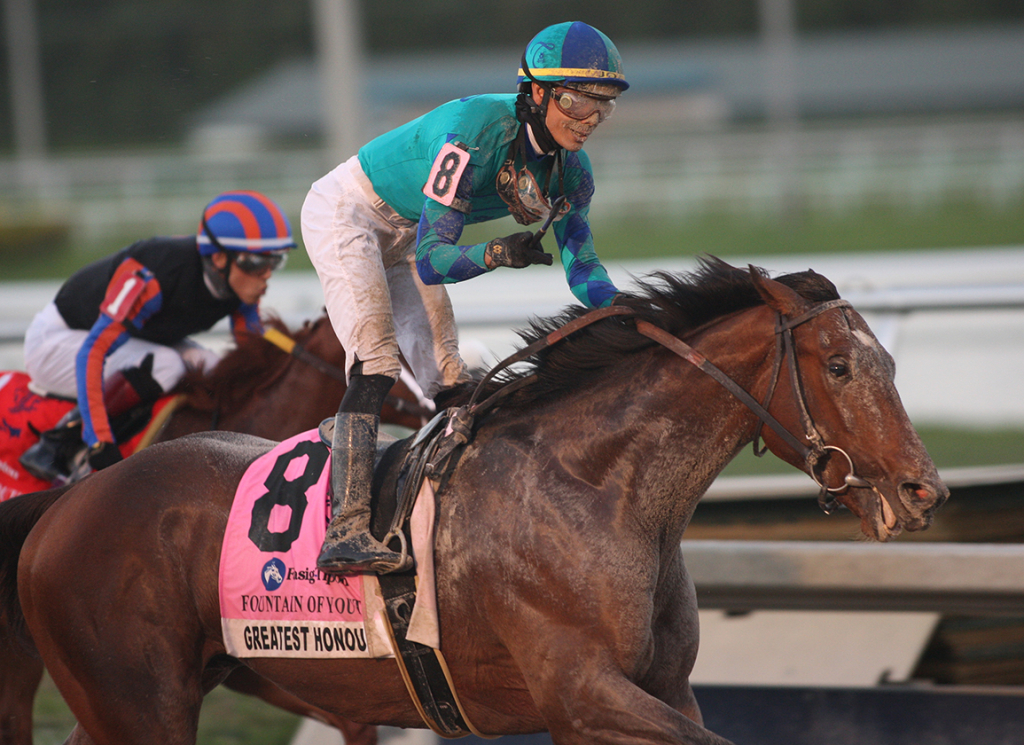Today we finally come to a group that has at least had some initial opportunity to show whether or not they can replicate their own racing prowess. By the same token, of course, this means that their level of support–which in many cases will already have declined through each preceding year, as racetrack exposure draws perilously closer–may now fall off a cliff.
If the stampede to unproven sires is ludicrous, then so is the haste with which they are abandoned. Stallions whose stock should plainly be granted time to mature round a second turn are often prematurely judged. Even more precocious types often find themselves long since abandoned by the most ruthless commercial breeders, who can annually move on to a fresh group whose reputation is usefully invulnerable to any appraisal more meaningful than hype.
For most stallions, then, this is a time when sales averages are coming down, along with fees and books. It's very rare that a young sire emerges from his opening racetrack skirmishes with the authority of Gun Runner, whose first sophomores spectacularly consolidated their record-breaking domination of the freshmen preceding the group we consider today. You more often find yourself dealing with an Overanalyze, champion freshman five years ago and meanwhile discarded to South Korea.
To be fair, however, this lot have laid down a very purposeful marker as the freshmen of 2022. The top six, indeed, can also be found among the top 10 of the overall list of juvenile sires. Auspiciously, moreover, there are grounds for thinking that several, judged on the template of their own performance and pedigree, can stimulate further progress from their maturing stock.
Arguably, the best long-term value right now rests with those who might emulate the way the tragic Arrogate transformed his legacy with his first sophomores, after they had made a quiet start as juveniles. On the other hand, those sires that had assembled monster books as commercial rookies should expect to be judged pretty sternly, pretty quickly.
So we have to strike a balance. Already second crop yearlings have typically registered a depreciation of many sire brands in the sales ring. On the other hand, investors of sufficient patience, vision and bravery may decide that this is precisely the moment to roll the dice on a slower burn.
Bubbling Under:
BOLT D'ORO closed out the year strongest to secure the freshman laurels after a sustained battle with two other very promising young sires, a distinction that formalized the superiority he showed both in the sheer breadth of his quality–a stellar one-in-five starters getting black type–and notably in the sales performance of his second crop, which uniquely among the trio managed to advance the values achieved by his first.
His median, always the key measure, rose to $152,500 from the $110,000 achieved by those debut yearlings who had meanwhile been showing that it was money well spent. That's an exceptional vote of confidence, albeit perhaps partly also reflected a rather narrower choice for purchasers after numbers had to be controlled (along with his boisterous behavior, at the time) for his second season. Bolt d'Oro was back up to 174 mares for his fourth book last spring, and the quality of his mares will only be going up with his fee-now $35,000 after slipping to $15,000 in 2021. Obviously he has to work harder to achieve the same ratios now, with the stakes raised, but he has made an exemplary start.
Fairly steady stuff on the track from MO TOWN (illuminated by Myrtlewood S. romper Key Of Life) does not tell half his story, as he is an unusual example of a stallion whose business soared in his third and fourth seasons. His second crop of yearlings emerge from a book of 104 mares, but he then covered 204 in 2021 and 218 this spring. If that generates renewed momentum on the track, in a couple of years from now, this could turn out to be a smart time to get involved at just $5,000.
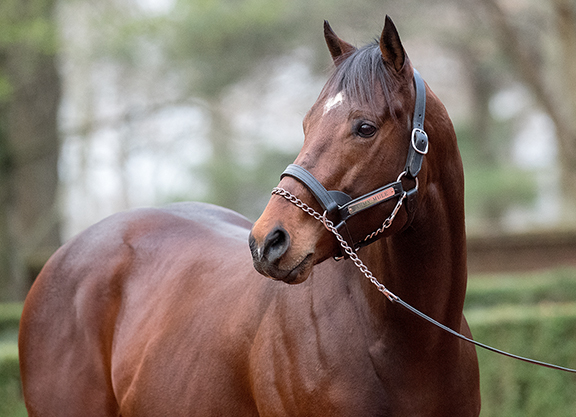
Army Mule | Sarah K. Andrew
BRONZE: ARMY MULE (Friesan Fire-Crafty Toast by Crafty Prospector)
$12,500 Hill 'n' Dale
This has always looked a stallion who could only have extreme outcomes. He was either going to be a dud, or prove himself exceptional value. Happily, there already seems little doubt that the switch is “on” and Army Mule appears set to build something pretty imposing on the fragile foundations of a track career that showcased freakish ability across barely four minutes, and a somewhat left-field pedigree.
His every trajectory is upward. Most importantly, his first juveniles have excelled, elevating him to fourth in the table from a smaller book (and much smaller fee) than those above him. Of his 24 winners from 61 starters, as many as five won at black-type level-the top three were tied with just one more-in tipping $2 million in purse money.
This performance had been anticipated by a stunning debut at the yearling sales, when Army Mule's first crop averaged nine times their $10,000 conception fee. In response, there was a further rebound in the size of his 2022 book, after he had slumped from 140 mares to 47 in his second season. He has now received 83 and 115 partners in the two years since. And while he couldn't quite replicate his initial yield with his second crop of yearlings, he again punched way above the kind of ratio you might expect at this stage, averaging $69,272 for 22 yearlings sold (from only 25 offered). Unsurprisingly, given his own giddy history as a yearling pinhook ($35,000 to $825,000) he also achieved dividends as high as $450,000 at the 2-year-old sales.
Originally, no doubt, breeders may have been torn between his six-length GI Carter H. success, in 1:20.94, on what proved to be the final of just three starts; and, on the other hand, some fairly unfashionable genes (albeit second and third dams both graded stakes winners). One way or another, however, things are plainly functioning in a repeatable fashion. You know what they say when it walks like a duck…
If Army Mule already sires runners like a good stallion, and sells horses like a good stallion, the chances are that he's a good stallion.

Accelerate | Lane's End
SILVER: ACCELERATE (Lookin At Lucky-Issues by Awesome Again)
$10,000 Lane's End
Of the three stallions launched into this intake at Lane's End, CITY OF LIGHT was always the golden boy. Though slow to get going, his 11 winners since midsummer already feature three at stakes level. Nobody, in short, still needs telling what he can still hope to achieve at $60,000.
At the sales, however, it has meanwhile proved much tougher going for the second crop of yearlings by the pair who started alongside him. Nonetheless I am unhesitatingly keeping the faith with the one I have liked all along.
In this series we've already nailed our colors to the Lookin At Lucky mast with Country House, believing the Ashford stalwart as likely to be underestimated as a potential sire of sires as he has always been in his own right. And there's no doubt in my mind that Accelerate is an absolutely astounding amount of horse for just $10,000.
Did anyone for a moment think that Accelerate was going to start off with a cavalcade of sprint maidens at the Keeneland spring meet? Yet having looked after his supporters very nicely with his first yearlings, he found himself childishly neglected with his second crop.
Accelerate did muster 14 juvenile winners, including one at stakes level, which is as much as could have been sensibly expected for a horse that himself required four sophomore starts to break his maiden in high summer. He then rolled on to win a stakes and the GII Los Alamitos Derby before finishing third in the GI Dirt Mile at the Breeders' Cup. Lest we forget, runner-up in that race was another sophomore who was only laying down foundations: horse name of Gun Runner (Candy Ride {Arg}).
Nobody should need reminding of the heights Accelerate achieved in his own maturity, winning five Grade Is at five. His only defeat that year? By a neck to none other than City Of Light, giving weight, the pair 10 lengths clear.
Accelerate laid down a perfect marker with his first sophomore runner, on New Year's Day at Laurel, where a filly making her fourth start broke her maiden easily over a bare six furlongs. That's a similar template to Winters Lion, who had run fifth, third and second in Churchill maidens before putting it all together to romp by 6 1/2 at Oaklawn in December. Anyone can see that all this is pure groundwork and breeders blessed with that rarest of commodities, patience, will recognize the value they're getting if their primary objective is to put a winner under their mare. (Which should, after all, be just about the most commercial thing anyone can do…)
Remember that Accelerate is out of an Awesome Again mare (representing the distaff gold of Deputy Minister) who also produced siblings, respectively, placed at Grade I and Grade III level, her own dam being a half-sister to a Grade I winner. (And the line traces to a fifth dam, Smartaire, whose son Smarten gave us the dam of Accelerate's grandsire Smart Strike.)
It's a dismal measure of the world we live in that Accelerate was retired at a fee as accessible as $20,000, lower than several horses he had left gasping in his wake-and that he has since taken three cuts in three years. What exactly are people after? This horse earned $6.7 million by dint of class, constitution and a physique prized at $380,000 as a yearling, despite his ostensibly uncommercial paternity. Bar a historic Triple Crown winner, Accelerate would have been a lock for Horse of the Year and I remain confident that he will, gradually and cumulatively, retrieve respect in his second career.
He actually has a very solid numerical base, with as many as 380 mares across his first three books. Given that his opening crops seem very likely to keep thriving with time, he could wind up with plenty of headlines overlapping in the coming years. As such, this feels like a very good moment to get ahead of the game with Accelerate. Sure, that suggestion might irritate those who suffered from the myopic treatment of his second crop at the sales. But someday people may look back at this horse, at this fee, as one of the great missed opportunities.
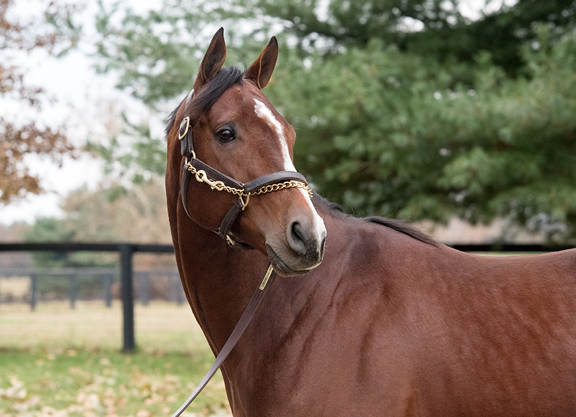
Oscar Performance | Sarah K. Andrew
GOLD: OSCAR PERFORMANCE (Kitten's Joy-Devine Actress by Theatrical {Ire})
$20,000 Mill Ridge
This guy will cost you a little more this time round-and so he jolly well should.
Most obviously, Oscar Performance has made an exemplary start on the track, with higher earnings per starter than any other top-10 freshman sire. From star managed to put him as high as eighth in the prize money table (slipstreaming Mendelssohn, with 90!) and featured not just 17 winners, a couple at black-type level, but also four placed in graded stakes company. These included a Grade II one-two when Andthewinneris beat Deer District at Keeneland in the fall.
We know, moreover, that these horses will keep building if they adhere to their sire's own template as a Grade I winner at two, three and four. And, crucially, even a commercial market so petrified of turf horses has managed to register his promise: bucking the usual trend, his second crop elevated their predecessors' yearling average from $43,149 to $57,474 (for a strong 38 sold of 44 offered).
But the real key for Oscar Performance is that he has emerged at an hour of need for the enlightened minority who actually want to connect the American bloodstock industry to huge racetrack opportunity on American grass.
Everyone knows how the turf program is expanding, and that a virtuous circle is underway between fully subscribed fields and purse money. And a lot of people, as a result, are investing heavily in elite European blood at sales over the water. On their own doorstep, however, they have now allowed both English Channel and Kitten's Joy to pass without ever having shown them anything like enough respect in the ring.
Now we have a blatant young talent emerging to blatant opportunity. There is generational room at the top, after the consecutive loss of his own sire, English Channel and Get Stormy. And here's a horse who had the brilliance to drop back from elite scores at 10 furlongs (Arlington Million/Belmont Derby) to make all in a Grade I mile; the soundness to bank $2.35 million across three seasons; and a pedigree that duplicates the same breed-changing alchemy top and bottom.
That's because his damsire is a son of Nureyev, who was by Northern Dancer out of the great Special (Forli {Arg}); while he extends the storied sire-line of Sadler's Wells, who was of course by Northern Dancer out of Special's daughter Fairy Bridge (Bold Reason). That may sound like way too much chlorophyll for a lot of Kentucky breeders, but I will never cease complaining about prescriptive, self-fulfilling assumptions about different bloodlines and different surfaces. Sure enough, Oscar Performance has already come up with Red Carpet Ready to win a dirt sprint by 10 lengths at Churchill on debut and then a 6.5f dirt stakes over the same track on her only other start.
Oscar Performance has been launched with unsurprising flair by a farm that once stood international influences in Diesis and Gone West. It's great to see them back in the stallion game, not least with so much “industrial” traffic cornered by the same few farms, and it's a typically thoughtful gesture-having trimmed him to $12,500 pending his first runners-to confine the increase in Oscar Performance's fee to $17,500 for those clients who had used him already.
The rest of us may have been less alert, but anyone can now see that Oscar Performance is on his way. He will surely rank high on the shortlists of European pinhookers as well. Roll out the red carpet!
The post Value Sires for ’23: Part V, First Sophomores appeared first on TDN | Thoroughbred Daily News | Horse Racing News, Results and Video | Thoroughbred Breeding and Auctions.



